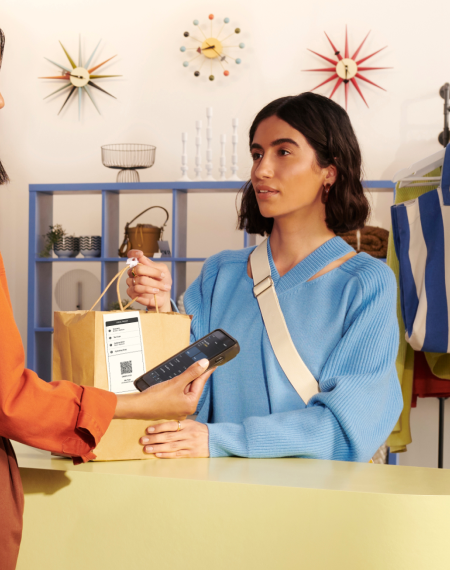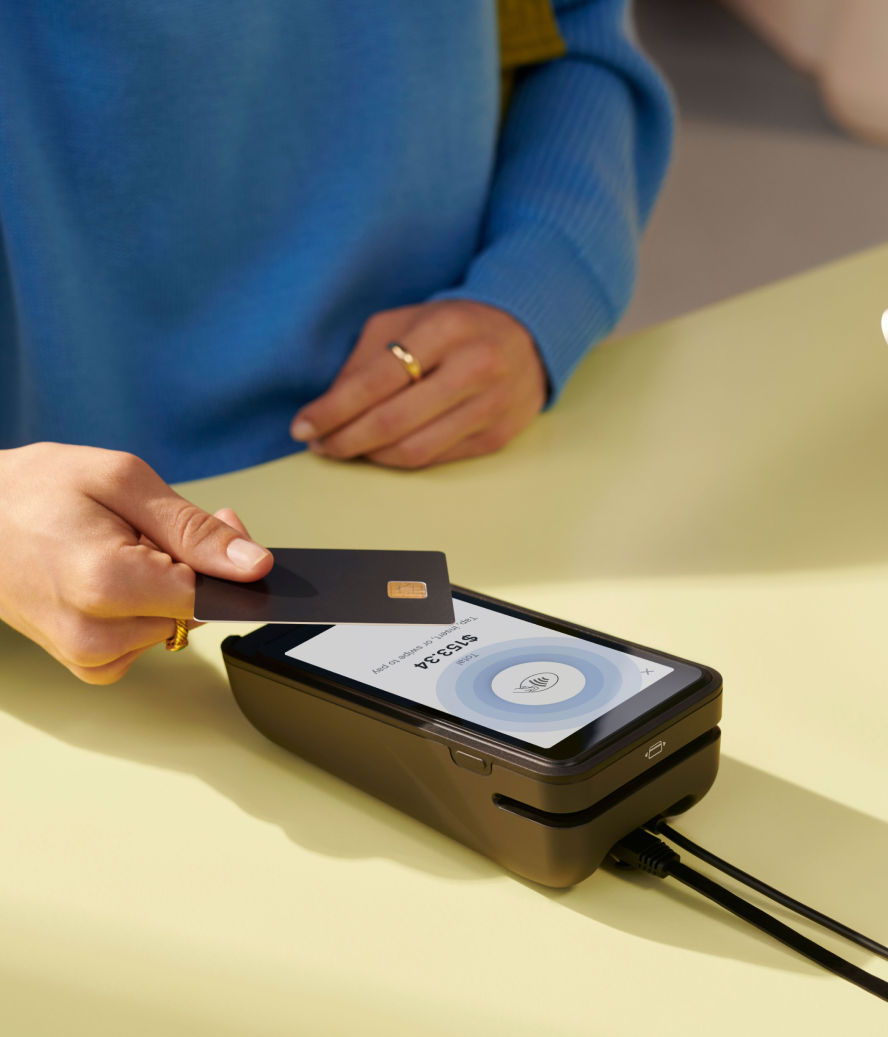Knowing the quantity of physical inventory on your shelves is one thing. Knowing its dollar value is another. Fortunately, this is where retail accounting comes in.
All ecommerce store owners need to understand how to value their month end or year end inventory. This valuation helps you know whether your business is profitable, the amount of tax you will pay to the IRS, and impacts your chances of securing a loan.
Retail accounting is a method accountants use to assign a dollar amount to closing inventory. This inventory valuation method uses what is called a cost-to-retail ratio, which you’ll learn to calculate in this guide.
What retail accounting really is
Retail accounting is an inventory valuation method that allows retailers to easily calculate the value of their inventory at the end of a financial period. It differs from other inventory valuation methods because it uses estimates. With retail accounting, you don’t need to count inventory or identify exact costs—it uses average sales margins to value inventory and make financial reporting easier.
The advantages of retail accounting
Unlike otherinventory valuation methods where you have to physically count inventory, retail accounting requires you to know total dollar amounts of sales and inventory purchases. It also handles large volumes of inventory, making it easier for retailers to manage it without tracking each item's specific cost.
Plus, retail accounting is cheap. It minimizes the need for detailed record keeping andtracking each inventory item, which reduces labor costs—staff don’t have to count inventory manually. All you have to do is assume consistent sales margins and know your total sales figures. This allows for faster financial reporting and better decision-making.
When to use retail accounting
Although the retail accounting method is temptingly simple and cost-effective, it may not be suitable for all business types or settings.
The following are situations when using the retail method makes sense:
- Retailers with stable pricing. This valuation method assumes a consistent sales margin. It won’t suit businesses that experience significant price fluctuations. You can still use it, but the estimates may be far from accurate, leading to a financial outlook that is markedly different from reality.
- Businesses with multiple locations. Think about the logistics of a physical inventory count, especially for a business with many locations. Withouta versatile inventory tracking software, especially one that scans items in and out and updates counts in real-time, counting inventory in multiple places can be a logistical nightmare.
- Business owners who prioritize convenience over detail. Retail accounting is simple and convenient. Using estimates to value your closing inventory means you don’t have to count inventory and you can produce your financial statements faster. With accurate and real-time financial data, you can make purchasing decisions faster.
- Retailers with large volumes of similar products. If most of the products you sell are similar, their sales margins are likely consistent. For these types of products, the retail method will more accurately reflect your actual financial situation.
Limitations and drawbacks of retail accounting
Despite its advantages, retail accounting comes with some limitations every business owner should know:
- Retail accounting is not precise. If you need more detailed and highly accurate financial reports around inventory cost, retail accounting might not be suitable. It’s based on the assumption of consistent sales margins, which rarely holds true in the real business world. Even gold, often considered stable, experiences considerable retail price volatility. And distortions can arise from fluctuations in both costs and prices.
- Temporary business activities. Besides price fluctuations, temporary internal business practices also influence retail accounting. For example, during a two-week promotion that includes price discounts, buy-one-get-one deals, and free giveaways, the retail method struggles to accurately incorporate these temporary initiatives. As a result, inventory valuations may become distorted.
Retail vs. cost accounting for inventory
Unlike retail accounting, which estimates the value of closing inventory based on consistent sales margins, cost accounting values inventory using the historical cost of each item. Historical cost refers to the original purchase price of a specific item.
The following are some common methods of cost accounting for inventory:
- First in, first out (FIFO): This method works on the assumption that the oldest inventory items (first in) are the first ones sold (first out). The value of closing inventory under FIFO is based on the most recent historical cost.
- Last in, first out (LIFO): This method is based on the assumption that the newest inventory items (last in) are the first ones sold (first out). The value of closing inventory under LIFO is based on the oldest historic costs.
- Weighted average cost (WAC): This accounting method determines the cost of ending inventory using a weighted average of all historical costs, instead of relying on the oldest or most recent prices.
While methods of cost accounting for inventory will still include some estimates, the outcomes of the cost accounting methods are more accurate.
Here’s how to look at these two broad inventory valuation approaches:
| Retail Accounting | Cost Accounting | |
|---|---|---|
| Accuracy | Not very accurate because it is based on the assumption of a constant sales margin. | Highly accurate because it's based on the actual historical cost of the inventory items. |
| Usage | Used by businesses in the retail industry. | Used widely. It’s the default method of valuing closing inventory. |
| Ease of Calculations | Easy to calculate. | Can be a bit more complex to calculate. |
| IRS Acceptance | Acceptable | Acceptable |
| Generally Accepted Accounting Principle (GAAP) | ✅ | ✅ |
How to implement retail accounting into your store
The first step in using the retail accounting method is to determine the cost-to-retail ratio you will use. This is straightforward when managing a few products, but it becomes more complex with hundreds of items.
When dealing with many products, it’s best to focus on those that make up most of your sales volume. For example, if you’re selling iPads and the Apple iPad (2022, 10th Gen) makes up 83% of your sales, applying its cost-to-retail ratio to your closing inventory valuation is reasonable.
The problem comes when you’re dealing with several products with widely differing sales margins. In that case, you may need to calculate the weighted average of your cost-to-sales ratio.
For example, if:
- Basic tees have a 20% margin and are 70% of your sales
- Premium hoodies have a 40% margin and are 20% of your sales
- Custom jackets have a 60% margin and are 10% of your sales
You may work out your cost-to-retail ratio as (0.2 × 0.7) + (0.4 × 0.2) + (0.6 × 0.1), which is 28%.
Next, value your closing inventory by subtractingthe cost of goods sold from the cost of goods available for sale. This is the standard procedure with every inventory valuation method. You use a predetermined cost-to-sales percentage because with the retail accounting method, you assume that all your inventory items have the same profit margin.
For example, assume you have a consistent cost-to-sales percentage of 25% on your inventory. That means you buy inventory for $10 and sell it for $12.50. Your sales for the month are $4,000. Yourbeginning inventory value is $1,500, and you purchased inventory worth $2,200.
In this case, your ending inventory value using the retail accounting method would be ($1,500 beginning inventory + $2,200 purchases - $3,000 cost of goods sold) = $700.
As you see, this is only an estimate. You don’t count inventory or verify its costs.
Tools for retail accounting
Shopify POS
One of the most valuable tools for retail accounting is Shopify POS. It offers unified solutions for both small businesses and enterprise retailers managing up to 1,000 stores. With Shopify's unified commerce architecture, all retail operations run on a single platform, eliminating the complexity of maintaining multiple systems.
For small businesses, Shopify POS provides streamlined inventory management, including features that create purchase orders, send low stock alerts, and conduct inventory counts—all operating from the same source of truth.
Unlike traditional retail systems that require complex integrations, Shopify unifies all your data in one platform. Whether a sale happens online, in-store, or through social media, all order, customer, and inventory data flows through a single system. According to research from a leading independent consulting firm, Shopify POS reduces total ownership costs on average by 22% compared to competitors.

QuickBooks Online
Recording sales and inventory changes in your accounting records is easy when you connect your Shopify store with QuickBooks Online. You can connect all your Shopify stores to track income and expenses. And your inventory counts sync between QuickBooks Online and Shopify for easy retail accounting.
Children’s boutique Twinkle Twinkle Little One already uses the Shopify and QuickBooks Online integration for easier retail accounting. “The time we’ve saved that would have otherwise been spent managing operational overhead is huge,” says owner Corey Glasson. “That’s time we can invest into actually growing the business. With Shopify, we’re able to be proactive and build for the future.”
Stocky
Stocky is an inventory management app built for Shopify POS. You can use it to automate tedious inventory processes such as creating reports, creating purchase orders for vendors when quantities dip below your predetermined threshold, and receiving new stock.
Take control of your finances with Shopify
Retail accounting can feel like a daunting task, particularly if financial reporting isn’t your forte. Luckily, Shopify has the tools you need to master accounting—which is made possible by unifying your most important data into a central business brain.
Retail accounting FAQ
What is a retail accountant?
A retail accountant is a professional accountant who works in a retail company. Their responsibilities include calculating tax liabilities, filing certain tax returns, reconciling bank statements, creating invoices, and tracking expenses.
What is the difference between retail accounting and cost accounting?
Both retail accounting and cost accounting are closing inventory valuation methods. However, retail accounting estimates the value of closing inventory based on the assumption that the business has a consistent sales margin. Cost accounting relies on the actual historical costs of the closing inventory items.
What is the retail method of accounting?
The retail method of accounting is a method accountants use to value closing inventory by estimating its value.
What is the meaning of retail accounting?
Also known as the retail inventory method, retail accounting is a process used to estimate the value of a store’s ending inventory for a specific period.





